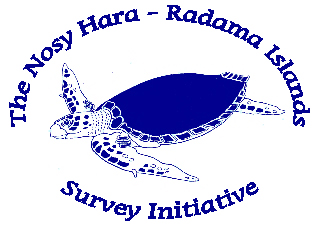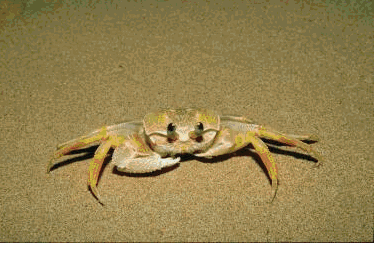.
It soon became evident that the populations of the Radama Islands can, in
terms of their impact on natural resources, be differentiated into two groups.
The permanent populations of mainly Sakalava ethnic origin, who form the majority
of the people living on the islands of Nosy Berafia, Nosy Valiha and Nosy
During
the first month in the field the Community Survey team spent one month working
in the Radama Islands - an archipelago of four islands in the North Western
tip of Madagascar, South of Nosy Be. The area is under consideration for
the development of a Marine Reserve, and the study was carried out concurrently
with work being carried out by WCS on the Sahamalaza Peninsula (the stretch
of coastline contiguous to the islands). This was a solely social study,
that hoped to provide information - previously completely lacking - as to
the activities and impact on marine resources of the island's populations.
Kalakajour, and the migrant fishermen that primarily base themselves on Nosy
Tany Fady. To differing degrees (see below) the permanent populations of the
islands are primarily rice farmers. For these people fishing was of secondary
importance. This was primarily due to the economic restrictions that the island's
locality placed on local people. The distance of the islands form the mainland,
and thus access to markets to sell fish, combined with their low value in
the region compared with other products such as rice or sea cucumbers, inhibits
their commercial exploitation. Moreover, traditional fishing techniques still
prevail in the area. The majority of fishermen use sail or oar powered pirogues
(small wooden boats), and fish with line and hook. Only a few fishermen had
nets, and none of the permanent population of the Radama Islands had motorized
boats.
During
the first month in the field the Community Survey team spent one month
working in the Radama Islands - an archipelago of four islands in the
North Western tip of Madagascar, South of Nosy Be. The area is under consideration
for the development of a Marine Reserve, and the study was carried out
concurrently with work being carried out by WCS on the Sahamalaza Peninsula
(the stretch of coastline contiguous to the islands). This was a solely
social study, that hoped to provide information - previously completely
lacking - as to the activities and impact on marine resources of the island's
populations. Such information is vital to avoid fruitless conflict in
the future, and to make sure that the needs of local people are integrated
into any future management plan.
Nevertheless, it should be noted that the permanent populations of the islands
were by no means inactive in the exploitation of marine resources. In particular,
mention should be made of the ever growing practice of sea-cucumber fishing
- which has emerged only in the last 7-8 years. It is normal for young men
to leave the Radama Islands to become sea cucumber fishermen, joining large
boats from Nosy Be or even from as far North as Diego. Moreover, a number
of men, particularly on Nosy Valiha, dive for sea cucumbers during the dry
season; a practice that is made profitable by the presence of sea cucumber
collectors that visit the islands, and that also form a substantial part of
the migrant population of Nosy Tany Fady. During our time in Nosy Be it became
apparent that sea-cucumber fishing has become big business in the area, and
that large well equipped fishing boats are common. While there are regulations
regarding the size of sea-cucumbers that are caught these are habitually ignored.
More work is urgently needed to assess what damage this new activity may be
causing. In terms of conservation it was satisfying to learn that for those
of Sakalava origin the capture of sea turtles is fady (taboo). Indeed, whilst
working on Nosy Barafia we were regularly accompanied by groups of children
who were intrigued by our group. When we came across turtle remains the children
refused to handle the turtle bones and disapproved of our moving them. In
comparison, the migrant fishermen and collectors that are attracted to the
area are much more active, and better equipped than there permanent counterparts.
These people were mostly concentrated on Nosy Tany Fady where there is a large
temporary settlement of migrant fishermen that numbered over 200 people at
the height of the dry season. In terms of the conversation of marine resources
around the Radama Islands it is these people that constitute the greatest
threat. Fadys regarding the capture of turtles do not apply on this island.
Moreover, while motorized boats and large nets greatly improve the efficiency
of fishermen, large nets are indiscriminate, catching turtles and, less frequently,
dolphins. For the future it is apparent that migrant fishermen remain the
biggest threat to the areas marine environment. While further work is needed
to assess the magnitude of their impact, until this area falls under the protection
of a Marine Reserve it is unlikely that the areas undoubted natural wealth
can properly be protected.

